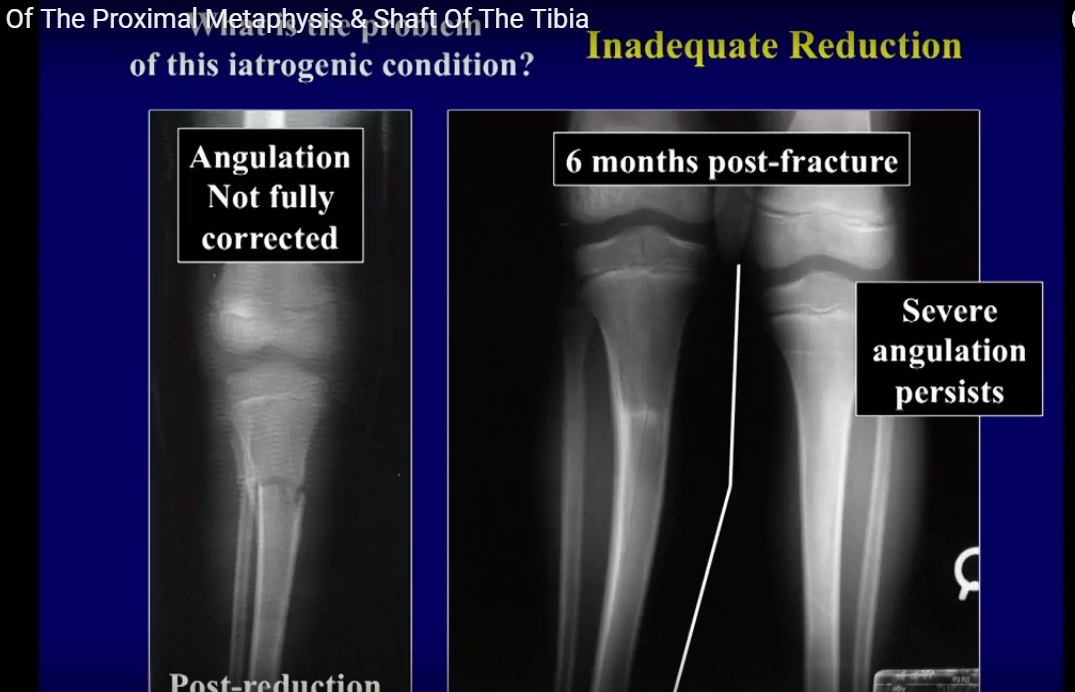

While helpful in classifying many tibial plateaus, it does not describe about 10% of all cases. Schatzker Type VI: Transverse fracture with a dissociation between the midsection of the bone and the narrow portion with many open and associated with soft tissue damage.Schatzker Type V: Wedge fracture of lateral and medial tibial plateau often with lateral depression, usually resulting from high energy trauma.Schatzker Type IV: Medial fracture of the tibial plateau with a split or depression often associated with damage to soft tissue, which can occur in both osteoporosis and traumatic injury cases.Depression in the lateral tibial plateau without a wedge or other fracture, most often in people with osteoporosis. Schatzker Type II: Split, wedge-shaped fracture combined with a deeper depression in the bone, often in people with osteoporosis or low bone quality.Schatzker Type I: A wedge-shaped fracture with minimal depression that often occurs in younger people.It is a system that describes the location and severity of a tibial plateau fracture. More severe fractures usually have to be repaired surgically with a metal rod, wires, or plates and screws.Doctors often use the Schatzker classifications system in North America. It is also recommended for patients who have closed fractures with only two major bone fragments and little displacement (gap). In addition, nonsurgical treatment may be recommended for patients who are poor surgical candidates due to their overall health problems or less active, so are better able to tolerate small degrees of angulation or differences in leg length. The advantage of casting is that these fractures tend to heal well, and casting avoids the potential risks of surgery such as infection. If the patient has an uncomplicated tibial fracture that has not occurred near the knee or ankle, nonsurgical treatment includes using immobilization of the leg in a cast. Treatment of a tibial fracture can be either surgical or nonsurgical, and it depends on several factors including: Loss of sensation in foot of injured leg.
TIBIA FRACTURE SKIN
Visible portions of the fractured bone, if the fracture causes a break in the skin.An abnormal alignment or positioning of the foot on the affected side.Bruising or discoloration (may indicate damage to blood vessels).Bone “tenting” the skin or protruding through a break in the skin.Limited range of motion in the knee or ankle area.Inability to walk or bear weight on the leg.Pain and swelling in the lower leg area.Les fractures du péroné se manifestent souvent par des chevilles cassées.
TIBIA FRACTURE PLUS
The most common symptoms of a tibial fracture are: Le tibia est l’os long le plus souvent fracturé ou cassé du corps (les os longs comprennent également le fémur, le péroné et l’humérus). These fractures are typically caused by a twisting force, and result in an oblique or spiral type of fracture. Contact and collision sports injuries, such as a fall while skiing, football, rugby or running into another player during soccer, are lower-energy injuries that can cause tibial shaft fractures. Typically, tibial fractures occur with high velocity injuries, such as motor vehicle accidents, and are fairly uncommon in sports. A tibial shaft fracture occurs along the length of the bone, below the knee and above the ankle. Causes of Tibial Fractureįractures happen when there’s more force applied to the bone than it can withstand. A tibial fracture is a condition characterized by a break in the tibia of the lower leg.

Other long bones include the femur, humerus and fibula. The tibia is one of the longest bones in the body.

It is the most commonly fractured long bone in the human body. The top of the tibia connects to the knee joint and the bottom of the tibia connects to the ankle joint.

The tibia is the major bone of the lower leg, commonly referred to as the shin bone.


 0 kommentar(er)
0 kommentar(er)
